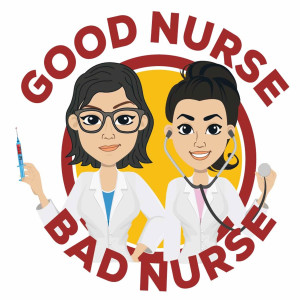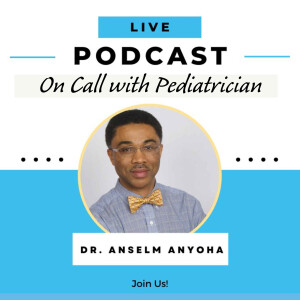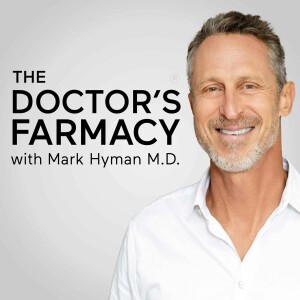So as promised, and following on from our previous shock episode, this time we've covered the topic of shock in Trauma. It's a massive topic and one that we all, yet again, can make a huge difference for our patients' outcomes.
There is some crossover as you'd expect from the concepts and assessment that we covered in our Shock episode, so we'd recommend taking a listen to that one first. Make sure you have a comfy seat and plenty of refreshments to keep you going for this one as we cover the following;
Definition Aetiology Hypovolaemic shock Neurogenic shock Obstructive shock Cardiogenic shock Physiology; Traumatic coagulopathy Other diagnostics Controlling external haemorrhage Pelvic binders REBOA Avoiding coagulopathy BP targets & permissive hypotension Fluid choices & supporting evidence TEG/ROTEM Calcium TXA Vasopressors Preventing hypothermia Relieving obstruction Interventional radiology Damage control surgeryAs always we’d love to hear any thoughts or comments you have on the website and via twitter, and make sure you take a look at the references and guidelines linked below to draw your own conclusions.
Enjoy!
Simon, Rob & James
References
Shock;The Resus Room podcast
REBOA;The Resus Room podcast
External Haemorrhage;The Resus Room podcast
Blood;PHEMCAST
TEG & ROTEM;FOAMcast
Major Trauma guideline;NICE
Resuscitative endovascular balloon occlusion of the aorta (REBOA):a population based gap analysis of trauma patients in England and Wales
Nationwide Analysis of Resuscitative Endovascular Balloon Occlusion of the Aorta in Civilian Trauma. Joseph B. JAMA Surg. 2019
The Pre-hospital Management of Pelvic Fractures: Initial Consensus Statement. I Scott. FPHC. 2012
RePHILL;Birmingham University Trials
Assessment and Treatment of Spinal Cord Injuries and Neurogenic Shock;Fox A. JEMS
Transfusion of plasma, platelets, and red blood cells in a 1:1:1 vs a 1:1:2 ratio and mortality in patients with severe trauma: the PROPPR randomized clinical trial. Holcomb JB. JAMA. 2015
Risks and benefitsof hypotensive resuscitation in patients with traumatic hemorrhagic shock: a meta-analysis. Owattanapanich N. Scand J Trauma Resusc Emerg Med. 2018
The CRASH-2 trial: a randomised controlled trial and economic evaluation of the effects of tranexamic acid on death, vascular occlusive events and transfusion requirement in bleeding trauma patients.Roberts I. Health Technol Assess. 2013
TEG and ROTEM for diagnosing trauma‑induced coagulopathy (disorder of the clotting system) in adult trauma patients with bleeding;Cochrane Review. 2015
Optimal Dose, Timing and Ratio of Blood Products in Massive Transfusion: Results from a Systematic Review.McQuilten ZK. Transfus Med Rev. 2018
Prehospital Plasma during Air Medical Transport in Trauma Patients at Risk for Hemorrhagic Shock.Sperry JL. N Engl J Med. 2018
More Episodes
October 2017; papers of the month
 2017-10-01
2017-10-01
 103
103
Cardiac Arrest; Roadside to Resus
 2017-09-21
2017-09-21
 249
249
Bicarbonate in arrest
 2017-09-11
2017-09-11
 111
111
September 2017; papers of the month
 2017-09-01
2017-09-01
 78
78
Asthma; Roadside to Resus Part 2
 2017-08-21
2017-08-21
 76
76
Asthma; Roadside to Resus Part 1
 2017-08-14
2017-08-14
 112
112
August '17; papers of the month
 2017-08-01
2017-08-01
 43
43
Acute Heart Failure; Roadside to Resus
 2017-07-20
2017-07-20
 76
76
Cervical Spine Immobilisation
 2017-07-10
2017-07-10
 64
64
July 2017; papers of the month
 2017-07-01
2017-07-01
 4
4
Double Sequential Defibrillation
 2017-06-21
2017-06-21
 8
8
Mechanical CPR
 2017-06-15
2017-06-15
 18
18
June 2017; papers of the month
 2017-06-01
2017-06-01
 6
6
BTS 2017 Oxygen Guideline; pre and in-hospital
 2017-05-19
2017-05-19
 15
15
Troponin Rule Out Strategies
 2017-05-15
2017-05-15
 25
25
May 2017; papers of the month
 2017-05-01
2017-05-01
 1
1
Top 10 EM papers; 2016-17
 2017-04-25
2017-04-25
 11
11
Acute Cholecystitis; making the diagnosis
 2017-04-15
2017-04-15
 31
31
April 2017; papers of the month
 2017-04-01
2017-04-01
 4
4
Trauma in the ED '17
 2017-03-18
2017-03-18
 5
5
Create your
podcast in
minutes
- Full-featured podcast site
- Unlimited storage and bandwidth
- Comprehensive podcast stats
- Distribute to Apple Podcasts, Spotify, and more
- Make money with your podcast
It is Free
You may also like

Good Nurse Bad Nurse


The Relaxback UK Show


On Call With Dr. Anselm Anyoha


The Doctor’s Farmacy with Mark Hyman, M.D.


The Peter Attia Drive

- Privacy Policy
- Cookie Policy
- Terms of Use
- Consent Preferences
- Copyright © 2015-2024 Podbean.com



 iOS
iOS Android
Android